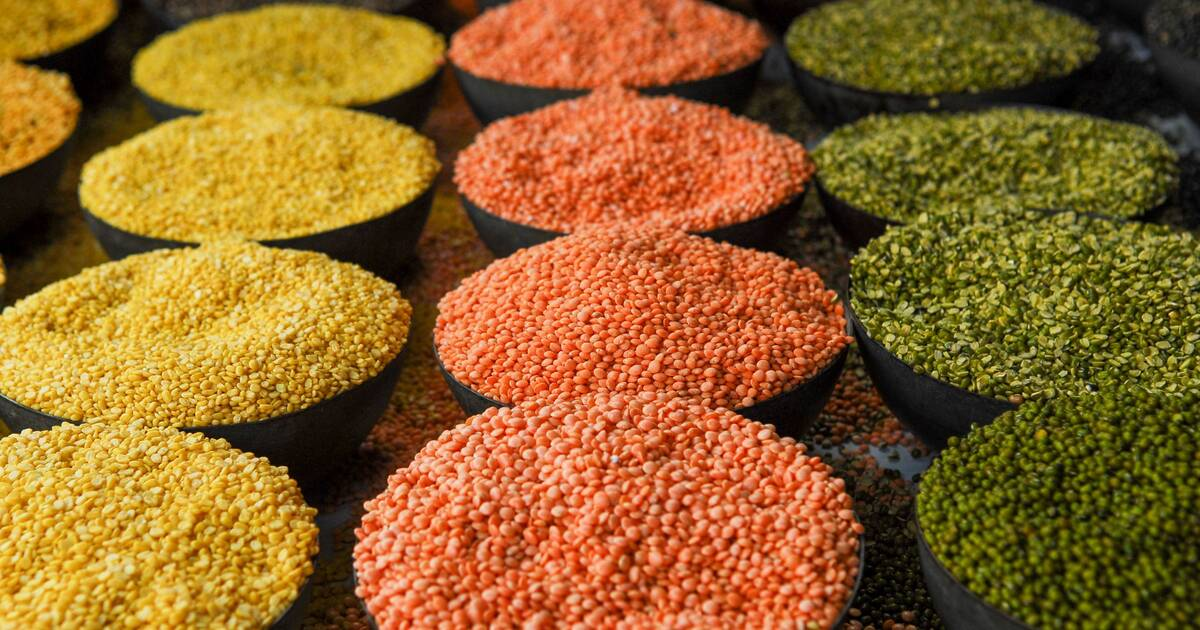Description

Copyright infringement not intended
Picture Courtesy: www.icarda.org
Context: India is expected to achieve an all-time high in lentil (masoor) production during the 2023-24 crop year, potentially making it the world's largest producer of lentils.
Several factors contribute to this significant increase in lentil production:
Higher Acreage
- The government has incentivized farmers to cultivate more pulses, leading to a reported increase in the area under lentil crops. As of January 12, 2024, there were 19.45 lakh hectares under lentil cultivation, marking a 6% increase from the previous year and a substantial 37% higher than the normal area.
Government Initiatives
- The government's efforts to encourage lentil cultivation include providing incentives to farmers and increasing the minimum support price (MSP) for lentils. The Home Minister emphasized the importance of self-reliance in arhar, urad, and lentils during an event on January 4.
MSP Increase
- The MSP for lentils was raised to Rs 6,425 per quintal for the Rabi Marketing Season 2024-25, a significant increase from Rs 2,950 per quintal in 2014-15. This move is aimed at promoting lentil cultivation and making it economically viable for farmers.
Path to Self-Sufficiency
- The managing director of NAFED (National Agricultural Cooperative Marketing Federation of India Limited) mentioned that India is on the "path to self-sufficiency," reflecting the positive outlook on the country's ability to meet its lentil demands domestically.

Lentils crop in India
Cultivation Area
- Lentils are grown in various states across India, with major producing states including Madhya Pradesh, Uttar Pradesh, Rajasthan, Maharashtra, and Haryana.
- The crop is adaptable to different agro-climatic conditions and is cultivated both in the kharif (summer) and rabi (winter) seasons.
Varieties
- India cultivates several varieties of lentils, including Pusa Masoor-1, Pusa Masoor-2, L-4076, Pant L-406, Pant L-4065, and more.
- These varieties differ in terms of growth duration, yield, and adaptability to specific regions.
Cultivation Practices
- Climate and Soil: Lentils thrive in well-drained, sandy loam to clayey soils. They can tolerate mildly acidic to slightly alkaline conditions. The ideal temperature for lentil cultivation ranges between 15°C to 25°C.
- Sowing Time: In North India, lentils are primarily grown in the rabi season, with sowing taking place from October to November. In parts of South India, lentils are also cultivated during the kharif season, with sowing occurring in June-July.
- Sowing Methods: Lentils are usually sown using line sowing or broadcasting methods. Row spacing and seed rate vary with the variety and local agro-climatic conditions.
Crop Management
- Water Management: Lentils are typically rainfed crops, but in areas with insufficient rainfall, irrigation is essential, especially during flowering and pod-setting stages.
- Fertilization: Lentils have relatively low nutrient requirements. Still, the application of organic manures or nitrogenous fertilizers can enhance yield.
- Weed Control: Timely weeding is crucial to prevent competition for nutrients and sunlight. Herbicides are also used in some areas to control weeds.
Challenges
- Pests and Diseases: Lentils can be susceptible to pests like aphids, pod borer, and diseases such as rust and wilt. Integrated Pest Management (IPM) strategies are employed to mitigate these issues.
- Market Dynamics: Fluctuations in market prices and demand can impact the income of lentil farmers. The government may intervene through MSP (Minimum Support Price) and other measures to stabilize prices.
Harvesting and Post-Harvest Management
- Harvesting: Lentils are generally ready for harvest in about 90-120 days after sowing. Harvesting is done manually, and the crop is cut close to the ground.
- Post-Harvest Processing: After harvesting, lentils are threshed to separate the grains from the pods. The cleaned lentils are then graded, packaged, and sent to markets.
Government Initiatives
- Subsidies: The government provides various subsidies on seeds, fertilizers, and machinery to support lentil farmers.
- Research and Development: Agricultural research institutes work on developing high-yielding and disease-resistant lentil varieties.

Conclusion
- Lentil production in India is a vital component of the country's agriculture. The crop plays a crucial role in enhancing soil fertility, providing nutritional security, and supporting the livelihoods of millions of farmers. However, like any agricultural activity, lentil cultivation faces challenges that require constant research, technological interventions, and government support to ensure sustainability and prosperity for the farming community.
|
PRACTICE QUESTION
Q. What factors contribute to the fluctuations in agricultural production, and how can sustainable farming practices be implemented to ensure a stable and reliable food supply in the face of changing environmental conditions?
|













